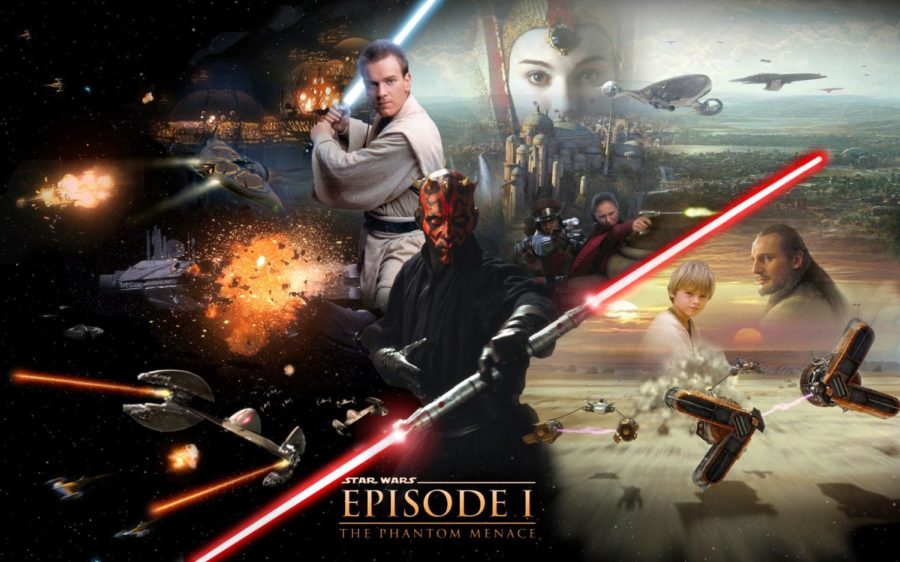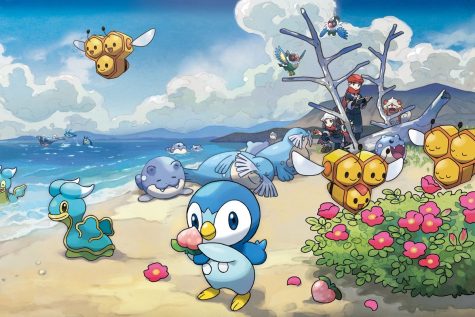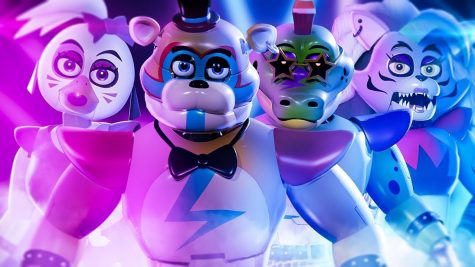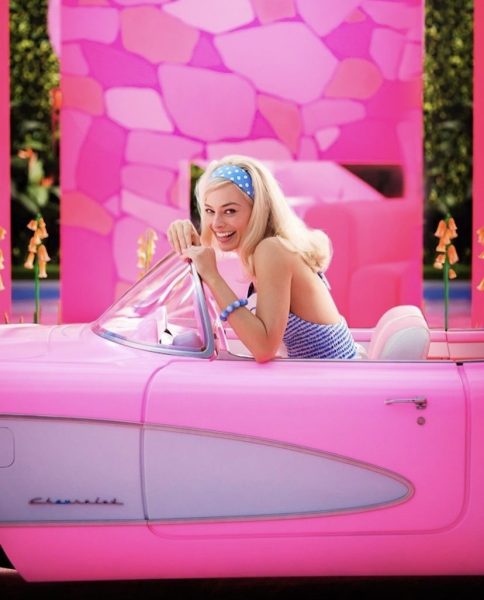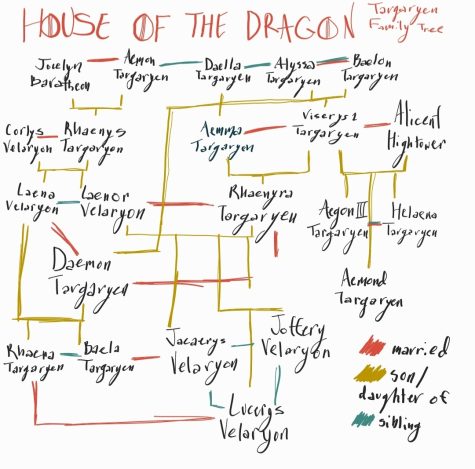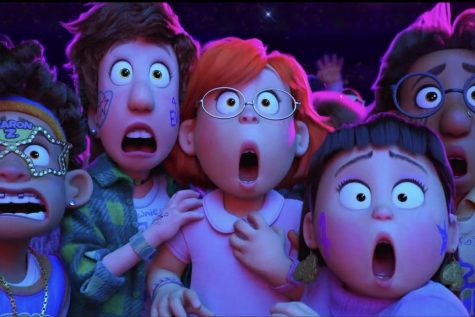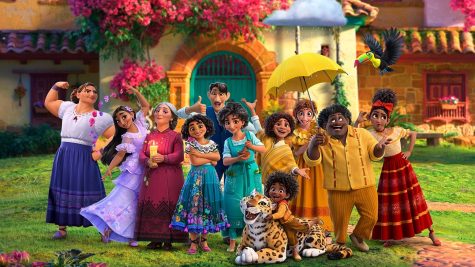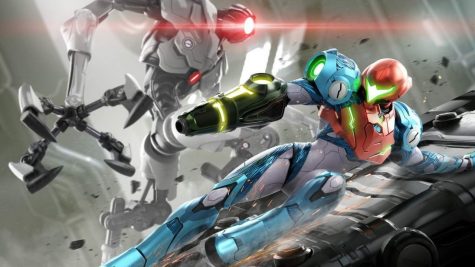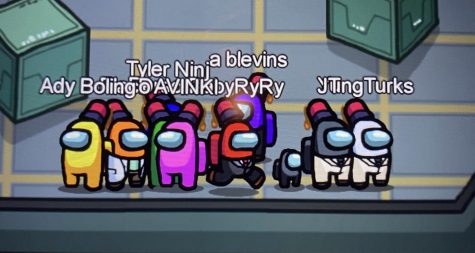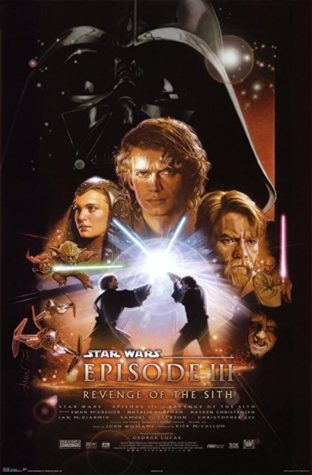Episode I: The Phantom Menace
“The ability to speak does not make you intelligent.”
When Lucasfilm first announced in the mid-1990s that a Star Wars prequel trilogy was in the works, the Force took fans by storm once again, just as it did with the original film’s release in 1977. Ever since the end credits rolled after “Return of the Jedi” in 1983, Star Wars fans were eager to see Jedi Knight Anakin Skywalker’s tragic transformation into Darth Vader, along with the unfortunate birth of the Galactic Empire. What they were not eager to see, however, was a series of droning senate meetings, wooden acting performances, bland and uninteresting characters, interminable discussions centered around trade negotiations, and an annoying, unfunny, and childish comic relief character.
“The Phantom Menace” is the first installment in the Star Wars prequel trilogy, the fourth Star Wars film theatrically released and the first chapter chronologically in the entire Star Wars saga. Written and directed by George Lucas, “The Phantom Menace” begins with stern Jedi Knight Qui-Gon Jinn and his young Padawan apprentice Obi Wan Kenobi visiting the Trade Federation’s flagship in hopes to negotiate with Viceroy Nute Gunray, who is responsible for blockading the planet of Naboo and disrupting the practices of the Galactic Republic. Little do the Republic and the Jedi Order know that the Trade Federation is surreptitiously in league with Darth Sidious, a power-hungry Sith Lord bent on destroying the Republic. After escaping the clutches of the Trade Federation, Qui-Gon and Obi Wan find themselves on Naboo, where the Trade Federation has deployed an army of droids to invade the planet’s capital and capture its queen, 14-year-old Padmé Amidala. Padmé is successfully rescued by the two Jedi, accompanied by banished Gungan Jar Jar Binks, and they all leave Naboo and evade the Trade Federation’s starfleet with the help of astromech droid R2-D2. Landing on the desert planet of Tatooine to repair their ship, Qui-Gon and Padmé meet a 9-year-old slave boy named Anakin Skywalker, who lives with his mother Shmi and his master Watto. Anakin is obsessed with creating and inventing things, from a protocol droid named C-3PO to his very own podracer engine, which he hopes he can win a podrace with. Sensing that Anakin could possibly be the prophetic Chosen One that would bring balance to the Force, Qui-Gon makes a bet with Watto that if Anakin wins the next podrace, he will be freed and train to become a Jedi. Surely enough, Anakin wins the podrace, and he tearfully leaves his mother on Tatooine.
Fast forward forty five minutes or so over long and pointless political talks, the Trade Federation finally begins to maraud Naboo. Jar Jar Binks leads the Gungans to help fight the droid army, Padmé and her personal bodyguards protect the capital from Nute Gunray, Anakin and R2-D2 try to blow up the Trade Federation’s flagship, and Qui-Gon and Obi Wan battle against Darth Maul, a Sith Lord dispatched by Darth Sidious, ordered to kill Padmé. While the flagship is destroyed and the Trade Federation’s forces are defeated, Qui-Gon is slain by Darth Maul, who is then gruesomely bisected by Obi Wan in rage. At Qui-Gon’s funeral, Obi Wan promises Anakin that he will train him to be a Jedi Knight, fulfilling his master’s final wish.
In the months and weeks before its extremely anticipated release on May 19, 1999, “The Phantom Menace” was the subject of numerous news reports, and it received an overwhelming amount of media coverage. Across the country, hundreds of thousands of Star Wars fans lined up for weeks outside their local movie theater to see the most hyped movie of the century as quickly as possible. When the projectors rolled at midnight and John Williams’ iconic theme song played, the audience clapped and cheered. However, once the opening crawl crept up the screen with its mentionings of “taxation,” “trade routes,” and “congress,” fans instantly deflated. Things only went downhill from there, and once the movie ended, they walked away in disappointment, some even in self-denial. 18 years later, “The Phantom Menace” is still viewed as arguably the worst chapter in the Skywalker Family saga.
Based on the summary of the movie above, the story alone is very flawed. Unlike the story of the original Star Wars trilogy, which is simple, straightforward, and exciting, the story of “The Phantom Menace” is confusing, convoluted, and uneventful. George Lucas himself said that Star Wars was a movie made for children, but the story is far too complex for them to comprehend it. Same could go for some adults as well.
Watching the movie, it is difficult to determine the protagonist, since the plot shifts its focus between its characters as fast and as random as a pinball. On top of that, the movie is also glaringly immature and uncomfortably juvenile in some moments, most of which are spent with Jar Jar Binks. From numbing his tongue with Anakin’s podrace engine to stepping in a pile of “icky icky goo” to being the victim of a crude fart joke (yes, in a Star Wars movie!), Jar Jar is solely in the movie to please the children in the audience, turning one of the greatest movie franchises of all time into an Adam Sandler comedy that has a four percent on Rotten Tomatoes. Unfortunately, Jar Jar is not the only flawed character. Most of the characters have boring and dull personalities and characterizations that prevent viewers from caring about them and identifying with them. Unlike the characters in the original trilogy, the characters in “The Phantom Menace” have no dialogue to say that is worthy of being quoted, remembered, or admired. And in a Star Wars movie where the characters are supposed to be the main driving force, that is a significant problem.
However, “The Phantom Menace” is far from the embarrassing failure of a movie that this review is making it out to be. As a matter of fact, several sequences in the movie do hold up and are still impressive and fun to watch years later, such as the podrace and the final battle with Darth Maul. Playing in the background of the latter, John Williams’ “Duel of the Fates” composition makes the movie worth at least one watch, making a fight between two Jedi and a Sith Lord with a double-sided red lightsaber all the more heart-pounding. It also sets up a great and emotional cinematic story that will conquer the test of time, albeit not so successfully. Having said all that though, the film’s lack of heart, personality, and fun prevents it from being a great movie in comparison to most of its fellow entries. The Force is weak with “The Phantom Menace,” but it still does have a small presence.
Hello there! Our goal is to provide relavent, engaging journalism for readers of all ages. Your donation will support the student journalists of the Wolfpacket at Claremont High School, and will allow us to purchase equipment, print our monthly issues, and enter in journalism competitions. We appreciate your consideration!

Caden Merrill is a senior at Claremont High School and it is his second year on the Wolfpacket. After serving as a reporter last year, Merrill is eager...





